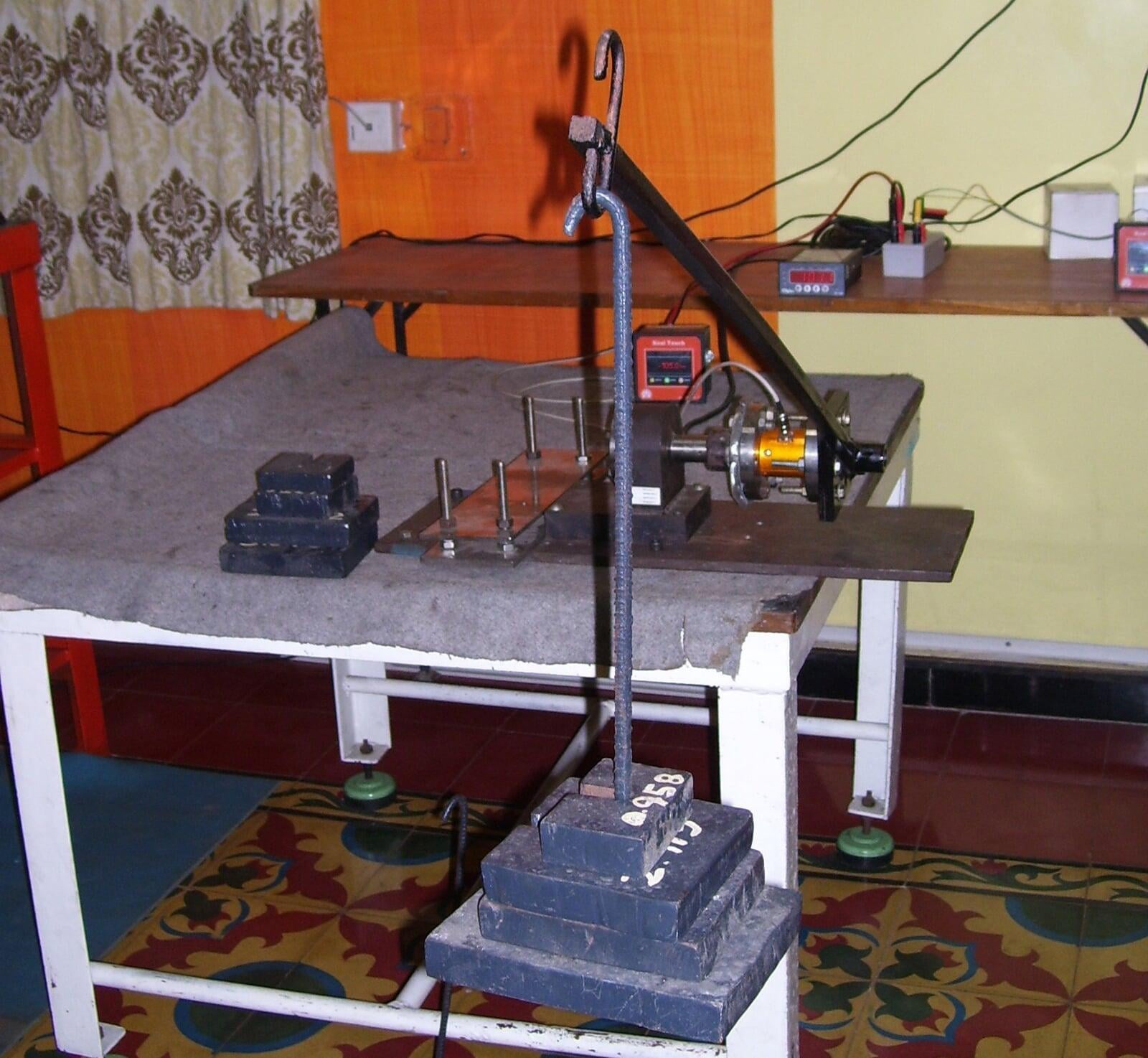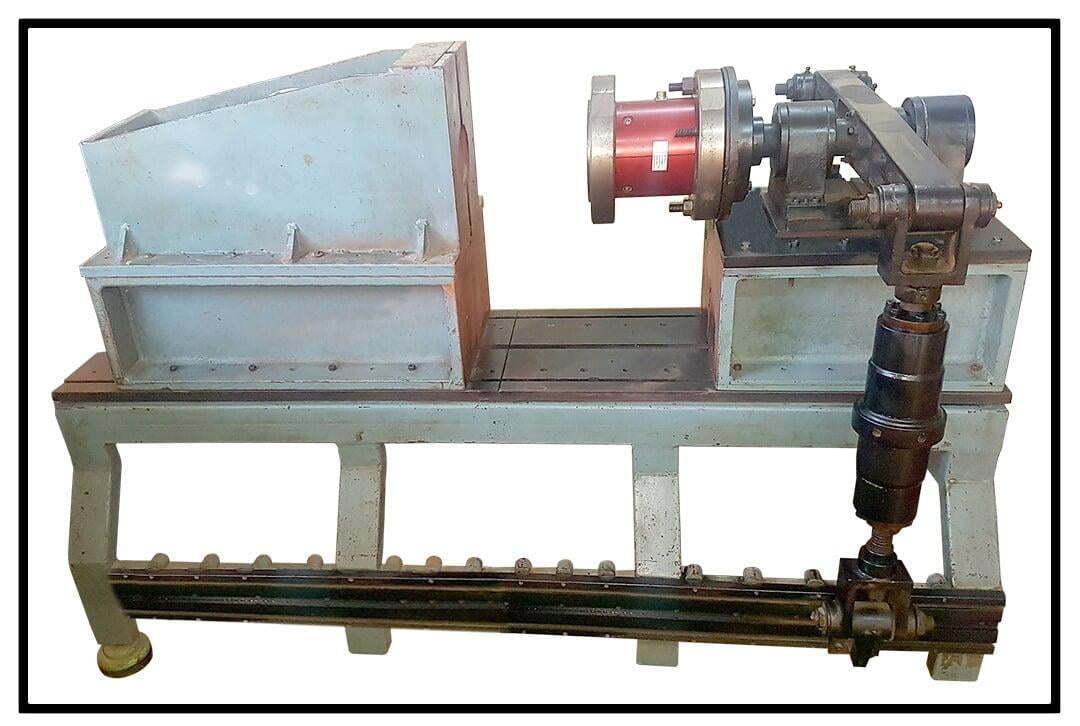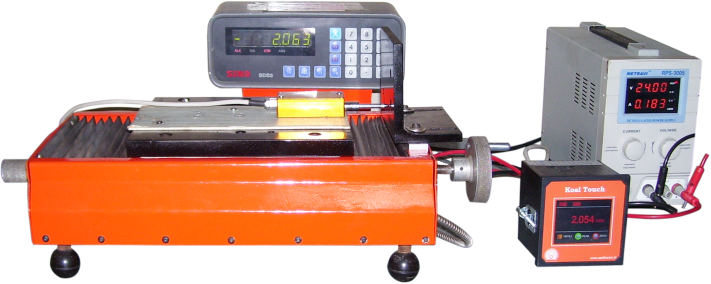Calibration
Home
Load Calibration
Torque Calibration
Displacement Calibration
Home
Calibration can be defined as a set of operations that compares the accuracy of a measuring instrument of any type (such as a load cell/Torque/Displacement) against a recognised standard. The process of calibration may also include adjusting the measuring instrument to bring it in alignment with the standard. By calibrating measuring devices against recognised standards.
What is a standard calibration?
A standard calibration will test Sensor repeatability and linearity, which are both used to determine the accuracy. A '5 Step' method is most commonly used, where a known load/Torque/Displacement is applied to the sensor incrementally, and output readings are taken at each step. For example, a 100 Kg load cell would have readings taken when subjected to loads of 20, 40, 60, 80 and 100 Kgs. This process is repeated twice, and the difference in the results used to determine its repeatability/accuracy. As most sensors are used with some form of read-out/display to form a machines, the sensors and instrumentation should always be calibrated together whenever possible.
Scope of Calibration
List of Masters
| Master Category | Type | Range | Methodology Used | Traceability |
|---|---|---|---|---|
| Load | Strain Gauge Load Cell | 100Kg, 500Kg, 2000Kg (2 Ton), 5000Kg (5 Ton) | IS 1828 (Part-I): 2015 | NABL |
| Torque | Strain Gauge Reactive Torque Transducer (Direction: Clock Wise & Anti Clock Wise) | 500 Nm | BS: 7882:2008 | NPL (National Physical Laboratory) |
| Displacement | Linear Encoder | 0-120mm | IS:2984 | NPL (National Physical Laboratory) |
Load Calibration
Why Calibrate Load Cell
A Load Cell is a device that is used to measure weight or force in a number of different applications. The load cell itself is a transducer that is used to convert a force into an electrical signal. This signal is usually only a few millivolts and requires amplification before it can be used. Most load cells use strain gauge technology. This technology is very well established and has been proven for more than 40 years.
Load cells are frequently used as part of a weighing system because they offer non-intrusive, highly accurate load measurement data, with properly installed and calibrated load cells routinely achieve accuracies of around 0.03 to 1% (depending on load cell type). These systems are of fundamental importance to many industrial sectors including aerospace, offshore, marine, heavy lifting and automotive. Product liability and safety issues demand that force measurements are demonstrably accurate, which is usually achieved by calibration to National Standards. This traceability to a National Standard is also often a requirement for compliance to ISO9000, resulting in company procedures that specify calibration schedules and the maintenance of appropriate records as part of their Quality Management System. As all load cells are subject to deterioration due to use, mistreatment, drift or ageing, calibration at regular intervals should to be carried out to establish how the load cell is currently performing, irrespective of whether the company has a Quality Management System in place. Load cells can also become less reliable due to electrical influence, mechanical effects, instrumentation faults and loose cables etc. Failure to inspect or clean load cells is another significant factor that can lead to operational issues, as particulate matter can build up around load cells even in clean environments. Unless calibrations are routinely carried out, load measurement readings can become less and less accurate, with the user potentially being unaware that they are using flawed data.
Torque Calibration
Why Calibrate Torque ?
A Static / Dynamic calibration Standard calibration methods for torque transducers are static in a double sense. For one, torque is measured only in a state when it is constant with respect to time. For another, the torque transducer is mounted in a calibration machine in a non-rotating setup. This is a contrast to the conditions in the real application of most industrial torque transducers. Typical industrial application for torque measurement is in power test stands for engines, gearboxes and transmissions in research and development in the automotive industry, in which the operating conditions are both rotating and dynamic.
This is a static calibration method that consists of a set of calibrated masses which act on a calibrated lever arm. The system can be directly applied to the transducer in the case of an unsupported calibration beam. In the ideal case the lever arm will be connected to a bearing to eliminate bending from the weights and masses and to minimize friction. This type of system is used for static torque calibration and offers the best uncertainties.
Displacement Calibration
Why Calibrate Displacement Sensor ?
A Static / Dynamic calibration Standard calibration methods for torque transducers are static in a double sense. For one, torque is measured only in a state when it is constant with respect to time. For another, the torque transducer is mounted in a calibration machine in a non-rotating setup. This is a contrast to the conditions in the real application of most industrial torque transducers. Typical industrial application for torque measurement is in power test stands for engines, gearboxes and transmissions in research and development in the automotive industry, in which the operating conditions are both rotating and dynamic.
This is a static calibration method that consists of a set of calibrated masses which act on a calibrated lever arm. The system can be directly applied to the transducer in the case of an unsupported calibration beam. In the ideal case the lever arm will be connected to a bearing to eliminate bending from the weights and masses and to minimize friction. This type of system is used for static torque calibration and offers the best uncertainties.







